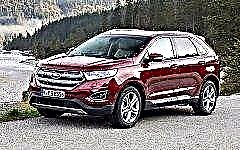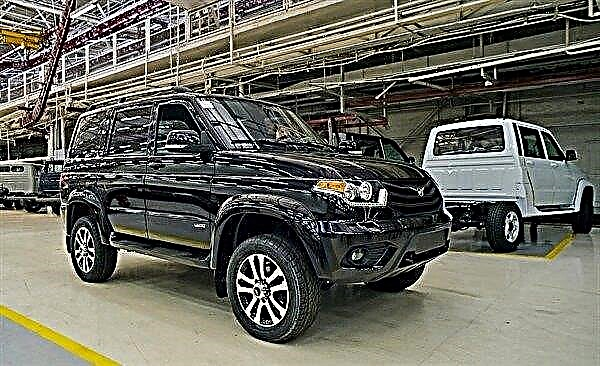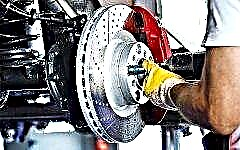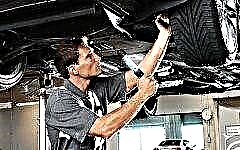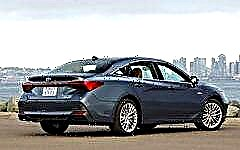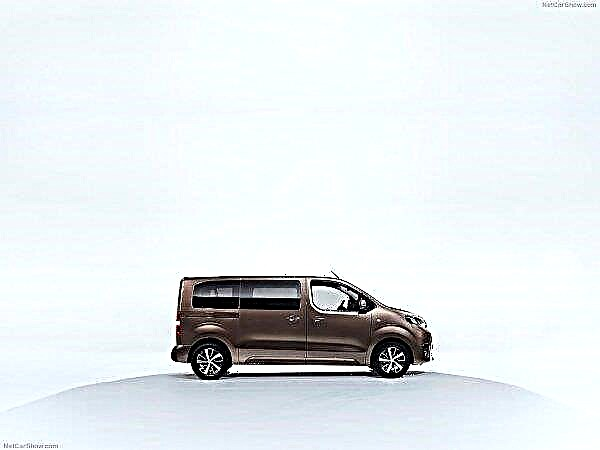
Driving a vehicle at night is much more difficult than during the day, so any actions of a motorist at night must be carefully thought out and concentrated. It is quite difficult to predict the traffic situation in the dark, which leads to rapid fatigue.
To facilitate night travel by car, they began to use professional night vision systems. Such systems are found preferably on luxury car models. However, they can be installed as an option on any machine.
General description of the NVA system

The specificity of driving in light and dark conditions varies greatly. To minimize the risk of road traffic accidents or dangerous maneuvers, vigilance and increased attention must be exercised. Night Vision Assist (NVA) is designed to improve the safety of road users in low light conditions.
Advanced technology helps the car owner recognize animals, pedestrians or other obstacles long before approaching them. Such a means allows you to take the right action in time and slow down or completely stop the car, preventing a collision.
The main purpose of the car night vision system is as follows:
- elimination of the risk of accidents due to collisions with various objects that are difficult to see in the dark;
- timely identification of moving obstacles before they appear in the coverage area of lighting devices;
- confident maneuvering and competent design of the driving trajectory with a clear view of the road boundaries and dividing markings.
The first models of NVA complexes were developed and installed on cars from General Motors Cadillac DeVille series in 2000.
Device and design
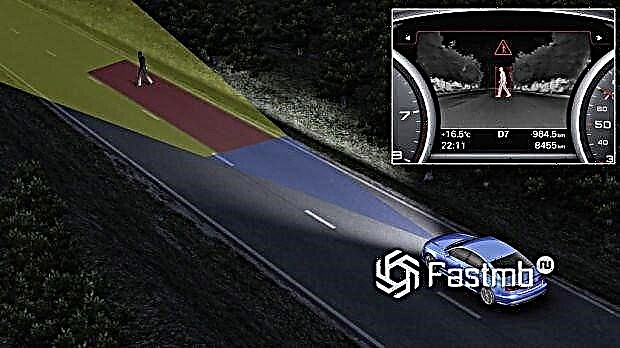
For NVA systems to work properly, 4 constituent elements are used. Their interaction contributes to the maximum safety of the driver and other road users:
- infrared and heat sensors, which (by default) are included in the head optics kit;
- an electronic board that processes the received data;
As a result of the interaction of these devices, important information is converted into a digital image and displayed on the monitor. The progressive NVA models use windshield projection technology instead of a physical display.
Such devices are much more expensive, but they are not in great demand due to the likelihood of distracting the driver with alternating pictures.
Specificity of action

Several modifications of night vision systems are on sale. Depending on the principle of work, they are divided into 2 large groups: active and passive.
Representatives of the first category work on the basis of additional sources of infrared rays, fixed separately on the machine. In most cases, active complexes are capable of processing data from a distance of up to 250 m from the obstacle. The picture displayed on the display has high resolution and clarity.
Passive releases function like a conventional thermal imager, i.e. without infrared integration. Receiving a heat signal, the sensors design a road pattern, making the image as high-contrast as possible, but presented in a gray color palette. The response range declared by the manufacturers reaches 300 m and more.
Active night vision systems are often found in the lineup of car manufacturers:
- BMW;
- Audi;
- Honda;
- Mercedes-Benz.
Popular complexes from leading developers

Leading brands are constantly improving their night vision systems, introducing new features and capabilities. In this regard, some companies have their own device classification. Let's consider the most popular solutions.
NVA Plus om Mercedes-Benz
The development of the auto concern Mercedes-Benz is distinguished by its high work efficiency. It is able to inform the driver about grooves and defects in the road surface, as well as alert about potential danger.
The functionality of Night View Assist Plus is based on the following algorithm:
- a complex of IR sensors with the highest accuracy reacts to all obstacles that appear in the way;
- the camera records the exact time of the trip and displays all the subtleties of road conditions;
- the electronic board processes all the data and projects it onto the display.
If the NVA detects that a pedestrian is approaching, the car owner and the person in front will receive an appropriate signal of potential danger. It can be used as a 3-fold light indication. But this warning only works when there is no movement in the oncoming lane.
The maximum efficiency of the system is noted at a speed of 45 km / h and a distance to an obstacle of about 80 m.
BMW Dynamic Light Spot

The legendary Bavarian concern supplies its cars with an advanced night vision device, which works on the basis of intelligent equipment and ensures maximum driving safety in low light.
The detection of danger in the form of pedestrians, animals and other moving obstacles is performed by an innovative sensor capable of responding to living organisms from a distance of up to 100 m.
The head optics kit integrates several sensors and auxiliary LEDs, forcing pedestrians to pay attention to the vehicle. The design of diode headlights provides for a 180 ° rotation to attract the attention of objects that are only directed towards the roadway.
Audi night vision
Audi launches a powerful night vision system, which is a standard safety feature in the Audi A8 executive sedans. The first generation of the complex was presented in 2010. The thermal imager is located near the concern's logo and reacts to obstacles from a distance of up to 300 cm. People and animals are marked with yellow icons for maximum concentration of the motorist. The on-board computer screen displays information about the approximate trajectory of the object.
If the system detects that the driver's and pedestrian's lines of movement intersect, the pedestrian will be highlighted in red. In addition, the motorist will hear an appropriate signal indicating a potential hazard.
Installation of a freelance complex

Night vision equipment is only found on luxury cars, and then as an expensive option. In the standard equipment, the system is present exclusively on elite executive class cars. Therefore, many car owners are wondering whether it is possible to install the tool on their car manually.
Such an installation is quite possible, since you can find a wide range of complexes from Russian and foreign manufacturers on sale.
However, it should be borne in mind that such work is accompanied by decent costs. The average cost of the system is 50-100 thousand rubles. Additionally, you need to evaluate the investment in installation work and equipment tuning, since it is very problematic to perform such actions on your own.
Homemade systems

Some craftsmen assemble full-fledged night vision devices with their own hands, using available tools and materials for this. For the upcoming assembly, you need to prepare an appropriate set of equipment and related parts. Finding them is quite simple at showdowns and the market.
Before getting started, you should have a basic understanding of automotive electronics.If possible, it is better to seek professional help from experts who will independently assemble and install the equipment on your machine.
If you are considering the option of assembling the complex with your own hands, you need to prepare the following components:
- Infrared emitters. For the trouble-free operation of the home-made complex, 6 sensors are required, installed in different places. They should be looked for in the market stalls of radio engineering. The optimal range of illumination must be selected based on financial capabilities.
The process of assembling the system itself is not accompanied by any particular difficulties. With minimal experience in working with such equipment, several hours will be enough to make an effective device.
Advantages and disadvantages

The advantages of NVA class devices deservedly include the following:
- clear and detailed display of objects that can pose a threat to the safety of the driver and passengers;
- miniature display, which displays all the necessary data without violating the ergonomics of the cabin;
- providing psychological comfort while driving at night;
- maintaining the driver's concentration in the dark without the need to heavily burden the eyes and attention.
But the system also has several important flaws:
- the complex reacts accurately to stationary objects, but it is not always able to determine in time the approach of an animal crossing the road at high speed;
- in unfavorable weather conditions (for example, in rain or fog), it is impractical to use the system - in such an environment it is ineffective;
- to track what is happening on the road, the motorist is forced to constantly peer into the monitor, distracting from driving.
Conclusion
Without a doubt, the night vision system is a useful and integral attribute of comfortable, and most importantly, safe driving in a car in limited light conditions. The most advanced models not only improve driver safety, but also alert pedestrians when a car is approaching with appropriate light signals.
However, completely trusting electronic systems, ignoring basic traffic rules and vigilance, is impractical. Under unforeseen circumstances, the correct action must be taken clearly and in a timely manner to avoid collisions.

|| list |
- General description of the NVA system
- Device and design
- Specificity of action
- Popular complexes from leading developers
- NVA Plus from Mercedes-Benz
- BMW Dynamic Light Spot
- Audi night vision
- Installation of a freelance complex
- Homemade systems
- Advantages and disadvantages



